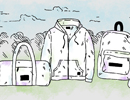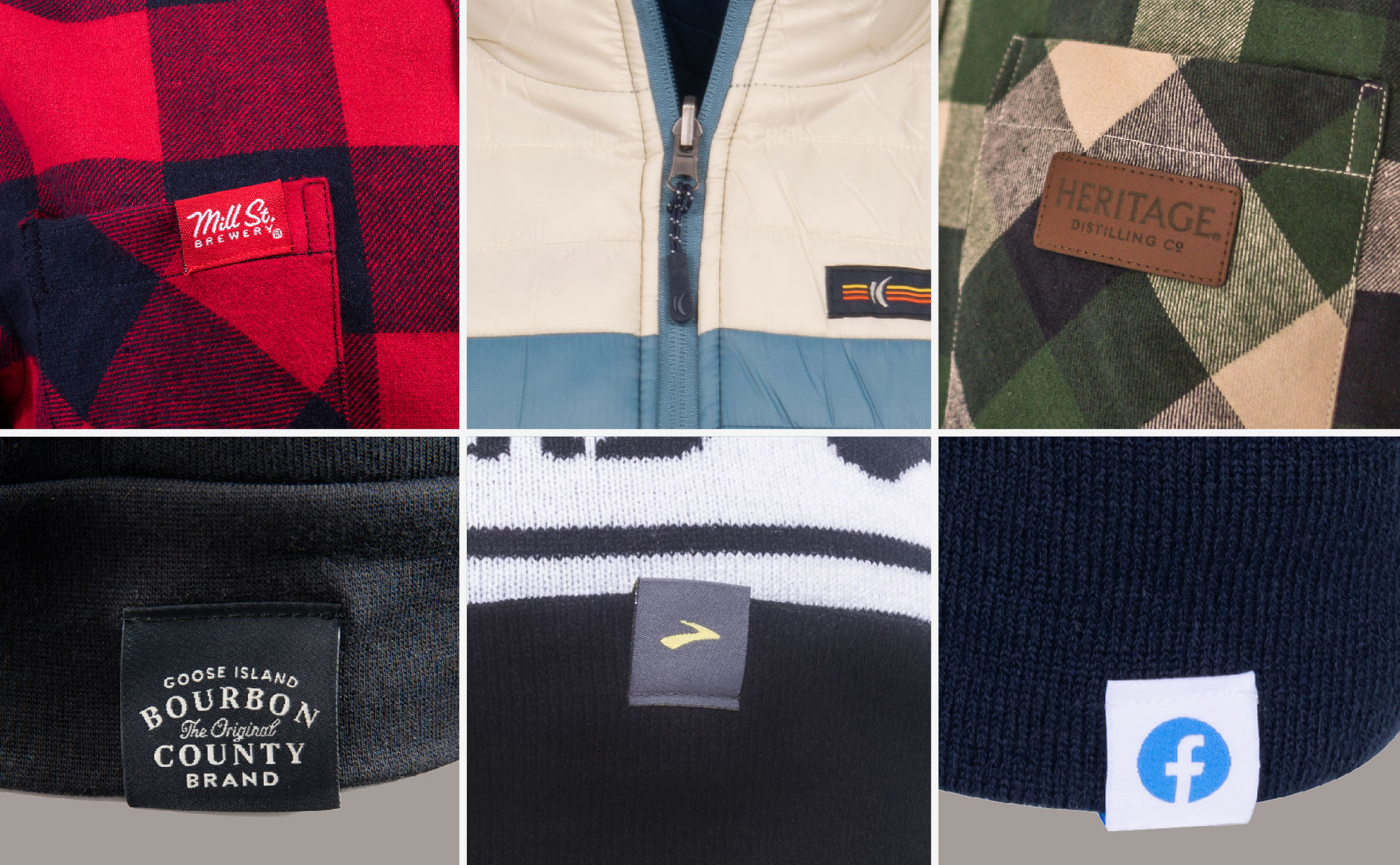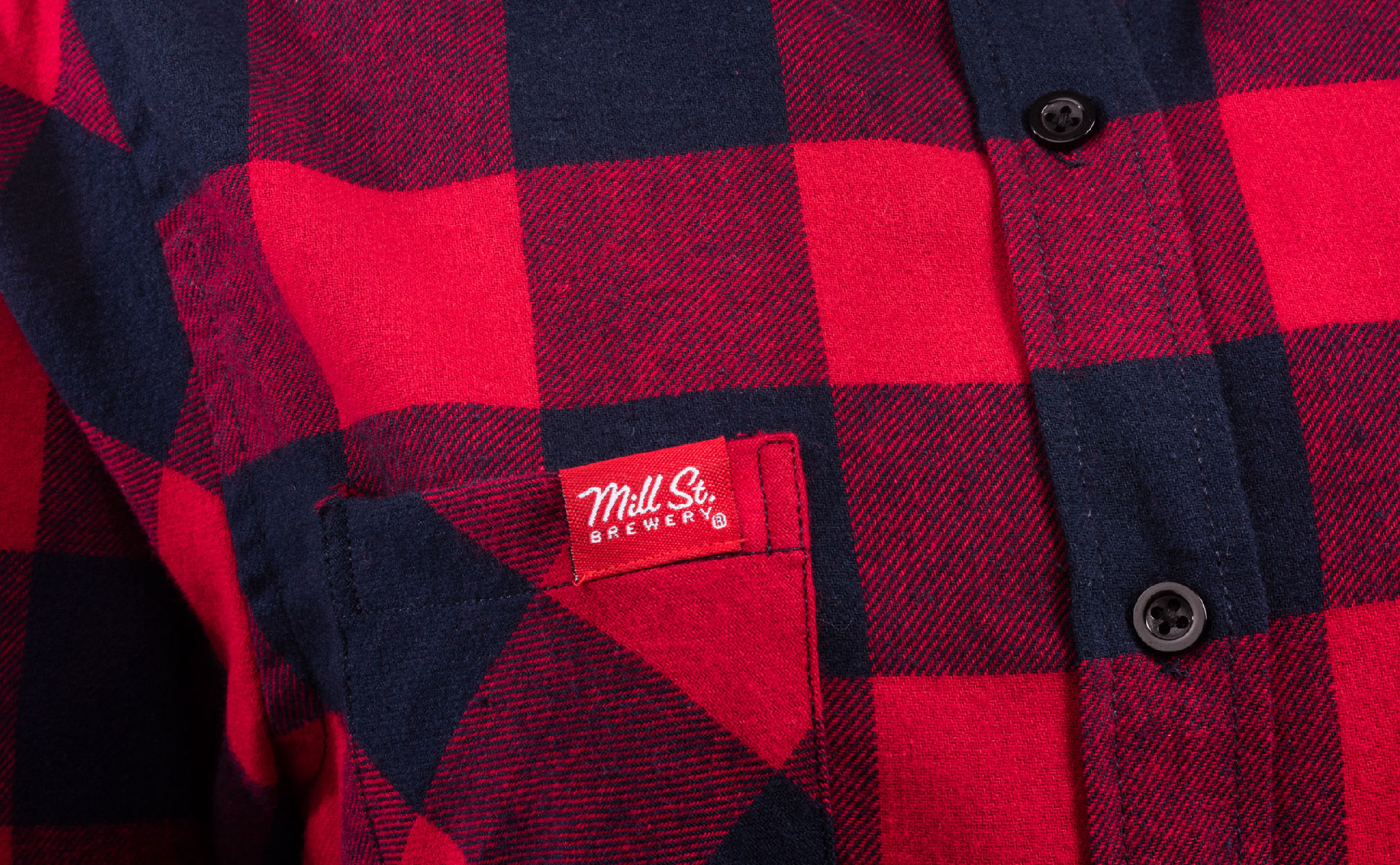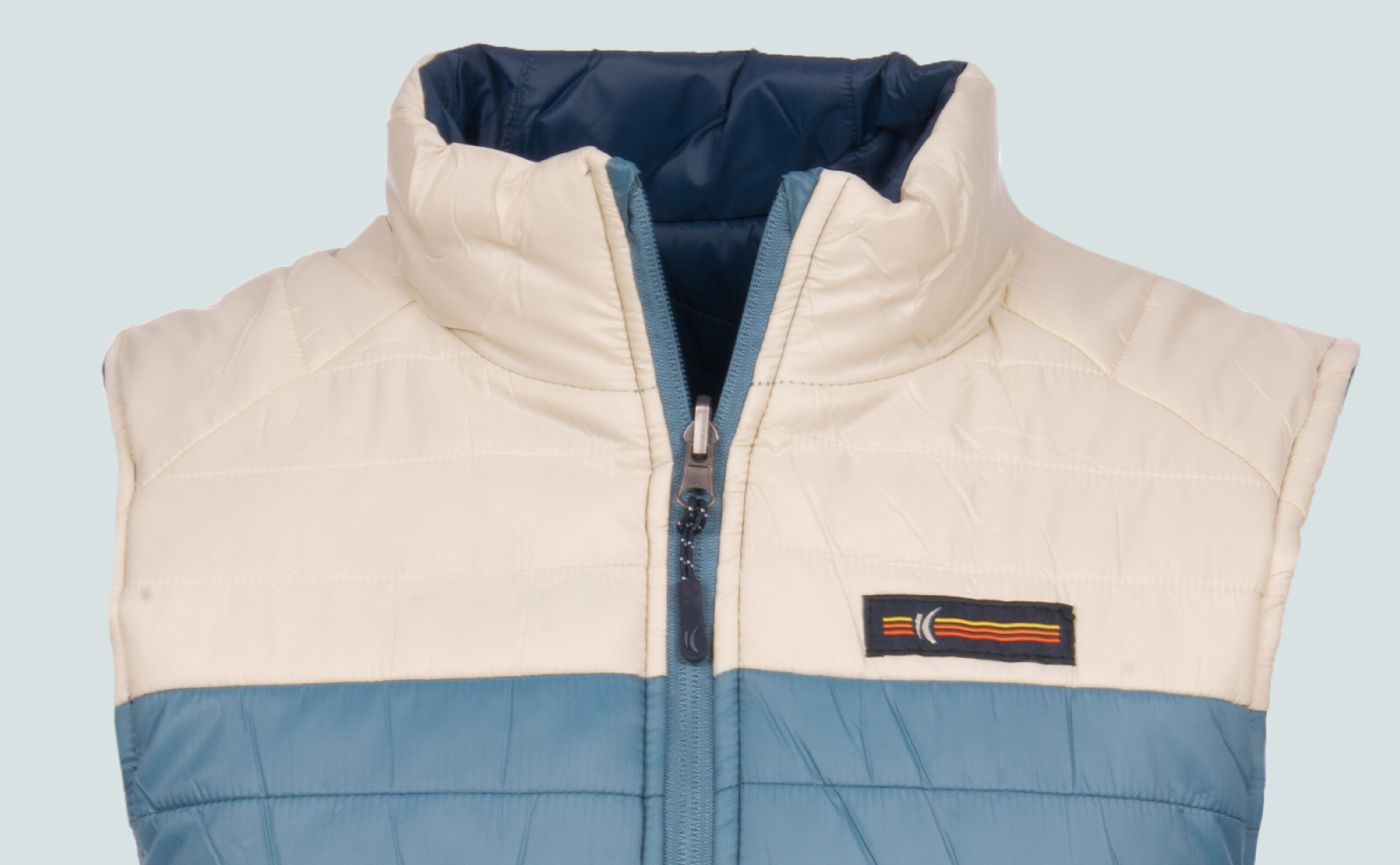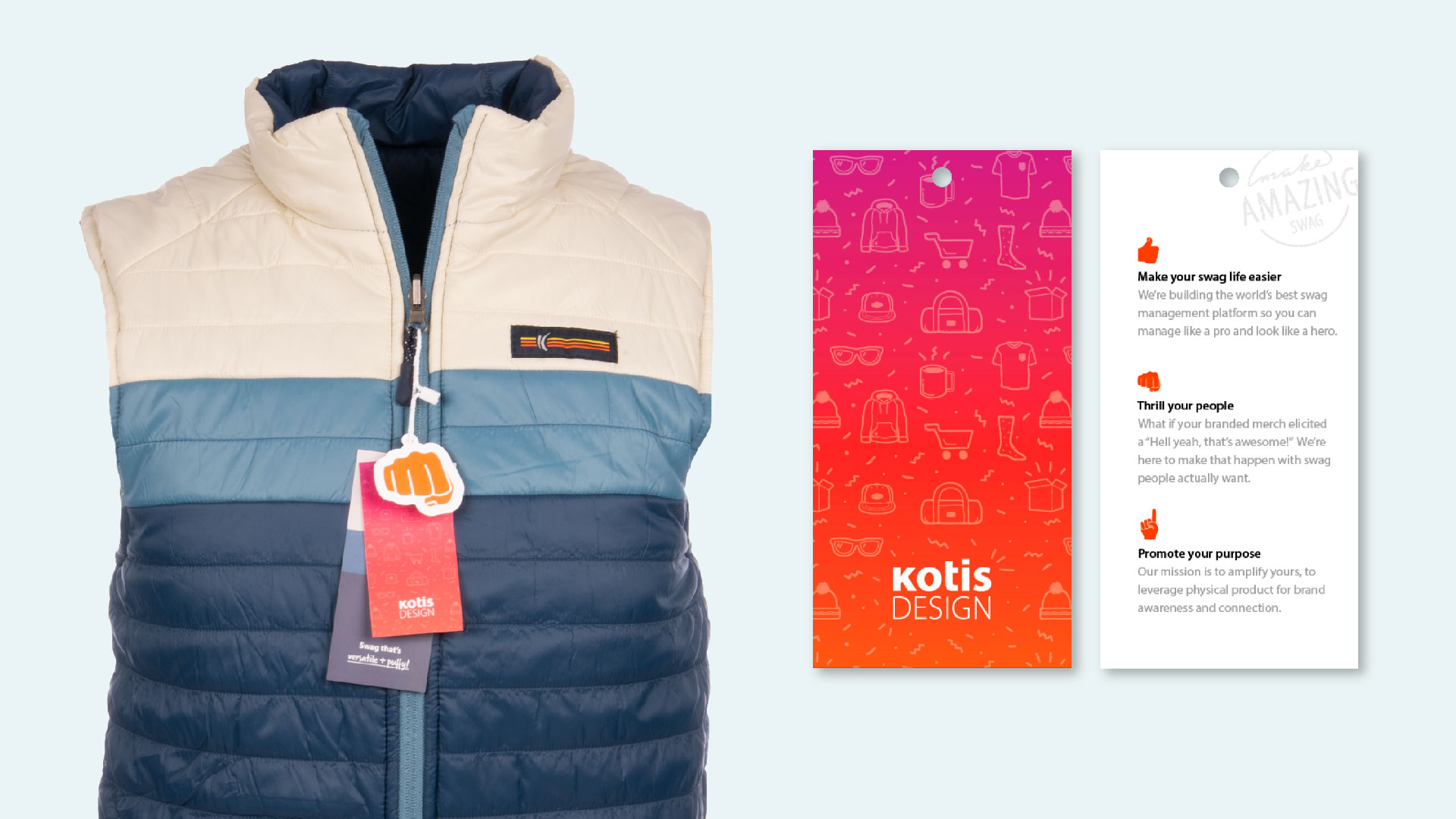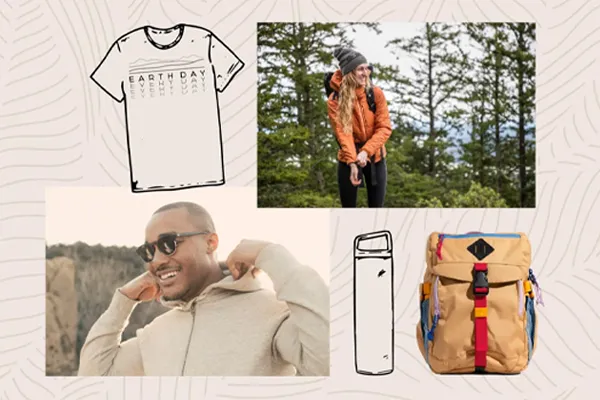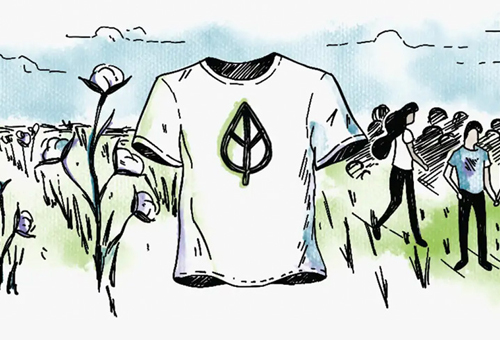It’s inevitable. At some point in the future your brand will change, evolve, be acquired, or no longer exist. Which is not necessarily fun to think about, however having some foresight with how you make merch now can future proof your branded gear and potentially save it from the landfill. After all, 85% of all clothing ends up in landfill, yet 95% is recyclable (as noted in Marine Layer’s ReSpun program)
This was one of the main reasons Patagonia famously stopped allowing additional logos on their gear in 2021. Their argument was simple: items with co-branding tend to have a shorter life span, especially when someone is no longer with that company. Two years later, Patagonia reversed course and is now allowing additional logos once again, but with an emphasis on removable and discreet decorations. They also expanded their Worn Wear program to accept used Patagonia gear that has co-branding. They’ve developed new ways to remove embroidery, cover up logos or even replace panels in order to extend the garment’s lifespan.
Taking inspiration from Patagonia’s Worn Wear program and leaning on the experience of running our own print shops for over a decade, we gathered ideas and tips for how we think through co-branding, removable branding, upcycling, and eventually recycling. We hope this helps your gear last a very long time.
Branding that’s minimal and removable… brilliant!
Before we talk about covering up obsolete decorations, let’s look at ways to use your brand in a sophisticated, “non-yelling” sort of way in the first place. We’ve always been a fan of minimal, retail style branding. Many wearable pieces do well to keep your brand smaller and off center while allowing a separate message or the retail brand mark itself to be the star. Recipients will still clearly know where the item came from and will most likely use the item even more. Which really is the point, right? And if those decorations can also be more easily removed, it’s a huge win for your item’s second life.
Woven labels
We love the retail vibe woven labels provide. They’re also much easier to remove than any other decoration, especially a loop label that’s only sewn on one edge. They can also hold more detail than embroidery, so some of the small text and details of your brand can be showcased.
PRO TIP: Order extra labels and store them in our warehouse for sewing onto future merch.
Zipper Pulls
Taking another tip from outerwear brands everywhere, the zipper pull is a great place to bring in branding and even a pop of color on something that gets handled every time the user wears the garment or opens the bag. Which lends itself to leveraging the feel of the pull for a tactile interaction that most decorations do not offer. A rubberized PVC detail, a thicker webbing application or a corded pull with a certain knot structure all have a different feel and also set the tone for the style you’re invoking (i.e. the brand story you’re telling).
Pulls are not only for branding, they also enhance the usability of the piece, especially in outdoor conditions where the elements (or gloves) are in play. Coming back to the moral of the story here, they’re easy to remove or swap out… maybe the easiest. The zipper pull may be small, but it packs a nice brand punch, one that can also disappear one day if need be.
Hangtags
Think about the last shirt you bought. It had a hangtag, right? There’s a reason you see hangtags on every item you buy. It works. For a super low cost per item, you get a chance to showcase your logo and more importantly your brand story. It’s a first impression as the user unpacks the item with anticipation.
Kotis on Kotis: We attach a set of Kotis tags to all fully custom items we make overseas. The first card shows our brand on the front and our mission on the back (never miss a chance to speak to the why behind your brand). The second hangtag lists out the unique features of the item at hand. Then we throw in a diecut fist bump sticker at the end to reinforce our brand story that swag is fun and should bring joy.
The Cover Up
There will be a time when removing a logo or covering it up will be the best option to give your merch a second life. Here are ways to make that happen depending on the decoration method. Let’s dive in.
Patches
Since patches are a solid shape, they’re a great candidate for covering up previous decorations in one fell swoop. As mentioned in our Timbuk2 backpack upcycle story, bonus points for taking it a step further and using Velcro backed patches to allow for easy removal.
Embroidery removal
Embroidery is a beloved and ubiquitous deco method especially on outerwear, bags and higher end items. It’s not a removable decoration per say, however a trimmer tool called the Stitch Eraser can be used to “shave” off embroidered thread. Tiny holes from the embroidery needles are still left in the garment, but certain fabrics hide this better than others. For example, thinner fabric like pique knits show the damage more since it gets “chewed” up more from the needle punctures. Softshell jackets and thicker durable fabric with a little stretch are more forgiving. Either way the fabric will show some level of damage after removing embroidery, yet it still creates a cleaner surface to re-decorate.
PRO TIP: When using the stitch eraser, we always do so on the back of the embroidery so the backing material acts as a barrier to prevent from cutting the actual fabric. We also use seam rippers to pull any loose threads out. It’s time consuming, but safer for the garment.
Screen printing
Since ink cannot be removed from the fabric, screen print cover ups can be trickier, especially as the design size increases. Often the only option is a solid block that completely covers the obsolete decoration and allows for a new design on that block. Adding a white base or using black ink will help ensure the design underneath doesn’t show through, although it will make for a thicker print.
Our design team can help mockup creative options to see what sticks. In terms of styling, think street wear, concert tees and other trends that lend themselves to blocky graphics. Also, loading the garments on press for a reprint can add an element of difficulty since things won’t line up perfectly (although laser alignment tools do help), so make sure to have some wiggle room in the graphic.
Heat transfers: For smaller designs, transfers can be a great option since the transfer material itself can be lined up precisely by hand before the heat press is clamped down.
All that being said, donating or recycling the shirt may be a better option. More on that below.
Recycling
If the item cannot be salvaged with creative cover ups or removable branding, then finding a place to recycle the item is the next best thing.
Marine Layer’s incredible Re-spun program lets people to send in old tees (or drop them at a store) and get $5 credit. Since starting in 2018, they’ve diverted nearly 500,000 tees from landfill and saved 2.6 billion gallons of water using Re-Spun cotton. They have a goal of being tee neutral by 2025.
Patagonia’s expanded Worn Wear program allows people to trade in used Patagonia gear with co-branding. They developed new ways to remove, cover up or even replace logo’d panels in order to extend the life of the gear. “We’re still organizing Worn Wear to take back in a big way all of these logoed items in closets,” said Sean Willhite, group sales manager at Patagonia. “We’re really excited about that.”
SwagCycle helps companies upcycle, recycle or donate obsolete swag in a sustainable way.
The Future of swag
How you make merch matters. With a thoughtful approach, your branded swag can not only look great now, but have a much longer life in the future.
Let’s do sustainable swag together.



